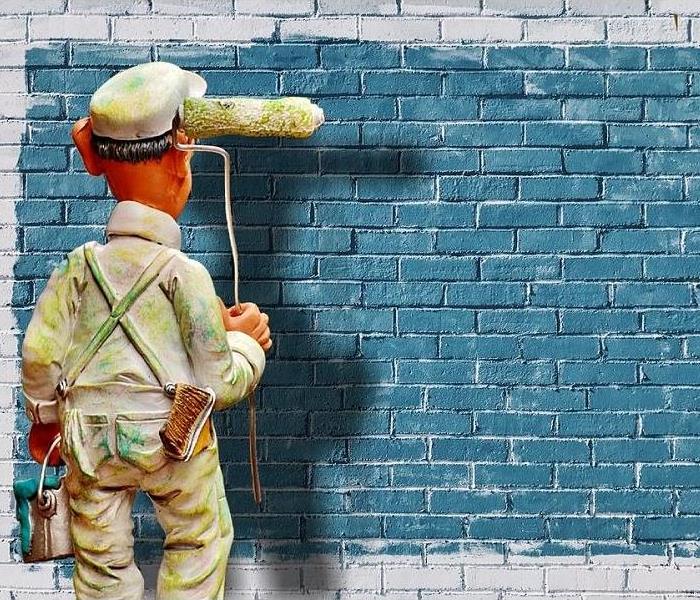Fresh Exterior Paint Offers Functional Benefits
8/13/2018 (Permalink)
Are you looking for ways to update the look of your home and gain functional benefits as well? Painting your home’s exterior might be something to seriously consider. Not only is fresh exterior paint one of the most cost-effective home projects, it makes a home more pleasing aesthetically and has functional benefits as well.
Functional Benefits of Fresh Exterior Paint
- Protection against the elements: Rain, wind, snow, and intense sunlight can all be harsh on a home. Paint acts like a protective shield to the exterior surfaces and can even increase the life span of siding.
- Maintains structural integrity: Unprotected wood is susceptible to water damage which can lead to mold and mildew which in turn, can break down the structural integrity of the home.
- Better curb appeal: A home with a fresh coat of exterior paint can be attractive to a potential buyer. If a buyer likes the outside, there is a better chance he will like the inside.
- Identification of insect damage and prevention of termite damage: The painting process can uncover insect damage and infestations can be stopped.
So when is the best time of year to paint a home’s exterior? In order to ensure that you will get the most out of your new exterior paint, it is essential that the job is done in the most ideal conditions.
Ideal Conditions for Exterior Painting
- Outside temperatures: Paint manufacturers will usually recommend minimum temperatures for painting. Generally, a good guideline is that if you are comfortable without the heat or air conditioning, then it is a good time for painting. It is also best to paint in times with smaller temperature fluctuations. Big temperature swings from morning to night are not good when painting.
- Rain and humidity: It is important to remember that paint should only be applied to a dry surface. The painting surface can become moist either by direct contact with rain or snow or indirectly by humidity or dew in the air. Always plan your painting project for times when there is no rain in the forecast for the next couple of days and be sure to wait to start painting after a rain until everything is completely dry. Also take note of humidity levels, as too high or too low humidity will influence how the paint dries.
- Wind: High winds while painting or before the paint is completely dry will cause complications. Dust and other particle blown onto the wet paint surface with stick. Paint sprayers do not operate as effectively in windy conditions and ladders may be unstable.
- Sunlight: Direct sunlight on drying paint can cause it to dry too quickly, leading to cracking or peeling. It is best to plan your painting route around the shifting sun.

 24/7 Emergency Service
24/7 Emergency Service
